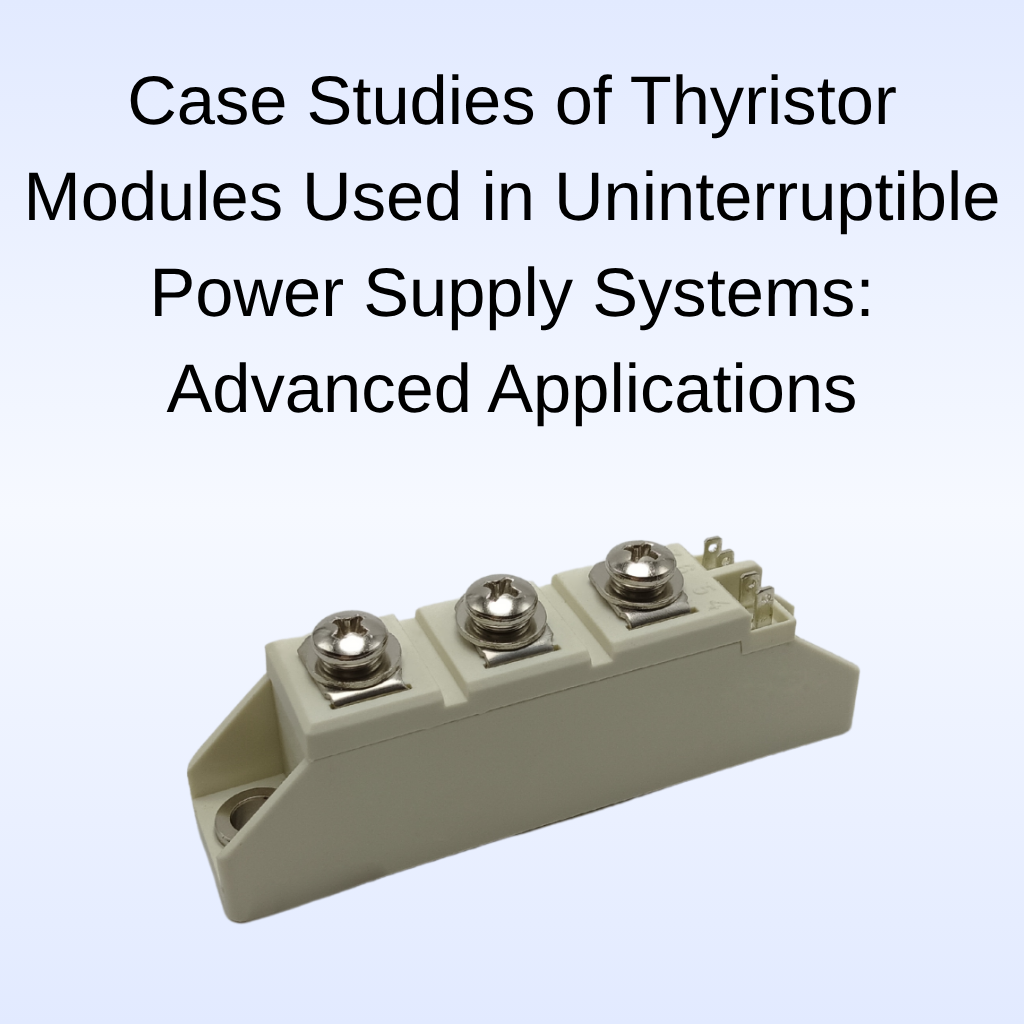Case Studies of Thyristor Modules Used in Uninterruptible Power Supply Systems: Advanced Applications
Thyristor modules are crucial components in Uninterruptible Power Supply (UPS) systems, ensuring that critical equipment continues to operate even during power interruptions. These modules offer various advanced features that enhance the performance and efficiency of UPS systems, such as high surge current tolerance, low on-state voltage, and industrial phase control. This article presents several case studies demonstrating the successful application of these modules in different industries, showcasing their benefits and real-world impact.
Case Study 1: Managing High Surge Current in a Telecom Facility
A telecom facility that operated around the clock faced frequent issues with power surges, which jeopardized the stability of its communications equipment. The facility upgraded its UPS system with thyristor modules designed to handle high surge current. These modules helped protect sensitive telecom equipment by absorbing the high surge current during power fluctuations. The addition of dual thyristor modules ensured redundancy, increasing the reliability of the system and preventing any single point of failure. Additionally, low on-state voltage optimized the energy efficiency of the system, reducing power losses and ensuring stable power supply to the telecom facility's critical infrastructure.
Case Study 2: Enhancing Power Quality in a Healthcare Facility
In a healthcare facility, the power supply to life-support systems, medical equipment, and diagnostic tools is critical. A malfunction in the UPS system could jeopardize the safety and well-being of patients. To address this, the facility installed thyristor modules with temperature control features. These modules ensured that the system’s components remained within safe operating temperatures, preventing overheating. Additionally, the use of dual thyristor modules provided enhanced reliability, ensuring that the UPS system could continue operating during periods of high power demand. The integration of industrial phase control allowed the system to maintain stable voltage, providing uninterrupted power to the healthcare facility’s vital equipment.
Case Study 3: Power Factor Correction in an Industrial Plant
An industrial facility that relied heavily on heavy machinery and automated equipment faced power inefficiency issues due to a low power factor. The plant’s UPS system was upgraded with thyristor modules equipped with HVDC power factor correction. These modules helped correct the power factor, improving the overall energy efficiency of the plant. In addition to correcting the power factor, the UPS system was enhanced with industrial phase control, ensuring that power was distributed reliably even during periods of high load. The combination of dual thyristor modules and high surge current handling allowed the system to handle heavy electrical loads without compromising performance or reliability, reducing energy consumption and operational costs.
Case Study 4: Smart Grid Integration in a Research Facility
A research facility required a UPS system capable of integrating with a smart grid to optimize power usage and ensure a stable supply during power outages. The facility upgraded its UPS system with thyristor modules designed for smart grid compatibility. These modules allowed the UPS system to interface with the grid, optimizing the load and ensuring that the facility’s critical equipment was powered continuously. The high surge current handling capabilities of the modules ensured that power surges from the grid were absorbed without affecting equipment performance. The inclusion of low on-state voltage minimized energy loss during power conversion, improving the efficiency of the system.
Case Study 5: Soft-Start Battery Charger in a Data Center
In a data center that hosted a large number of servers and networking equipment, sudden power surges during the startup of UPS systems posed a risk to the equipment. To prevent this, the data center installed thyristor modules with soft-start battery chargers. This feature allowed the UPS system to gradually ramp up the load during startup, preventing the damage caused by power spikes. The integration of dual thyristor modules and high surge current capabilities ensured that the UPS could handle power surges and maintain system stability. Additionally, the low on-state voltage helped improve the system’s energy efficiency, resulting in reduced operational costs for the data center.
Conclusion
These case studies demonstrate how thyristor modules have been successfully employed across a wide range of industries to enhance the performance, efficiency, and reliability of UPS systems. Features such as high surge current tolerance, low on-state voltage, industrial phase control, and dual thyristor modules have proven to be valuable in addressing the challenges faced by various facilities. Whether in telecom, healthcare, industrial, or research settings, the right thyristor modules ensure that critical equipment remains operational, even during power disruptions.
READ MORE:
Installation and Maintenance Guide for Thyristor Modules in UPS Systems: Optimizing Performance
Installation and Maintenance Guide for Thyristor Modules in UPS Systems
Case Studies of Thyristor Modules in Uninterruptible Power Supply Systems: Applications in Industry
Case Studies of Thyristor Modules Used in Uninterruptible Power Supply Systems
Best Practices for Selecting Thyristor Modules in UPS Systems

